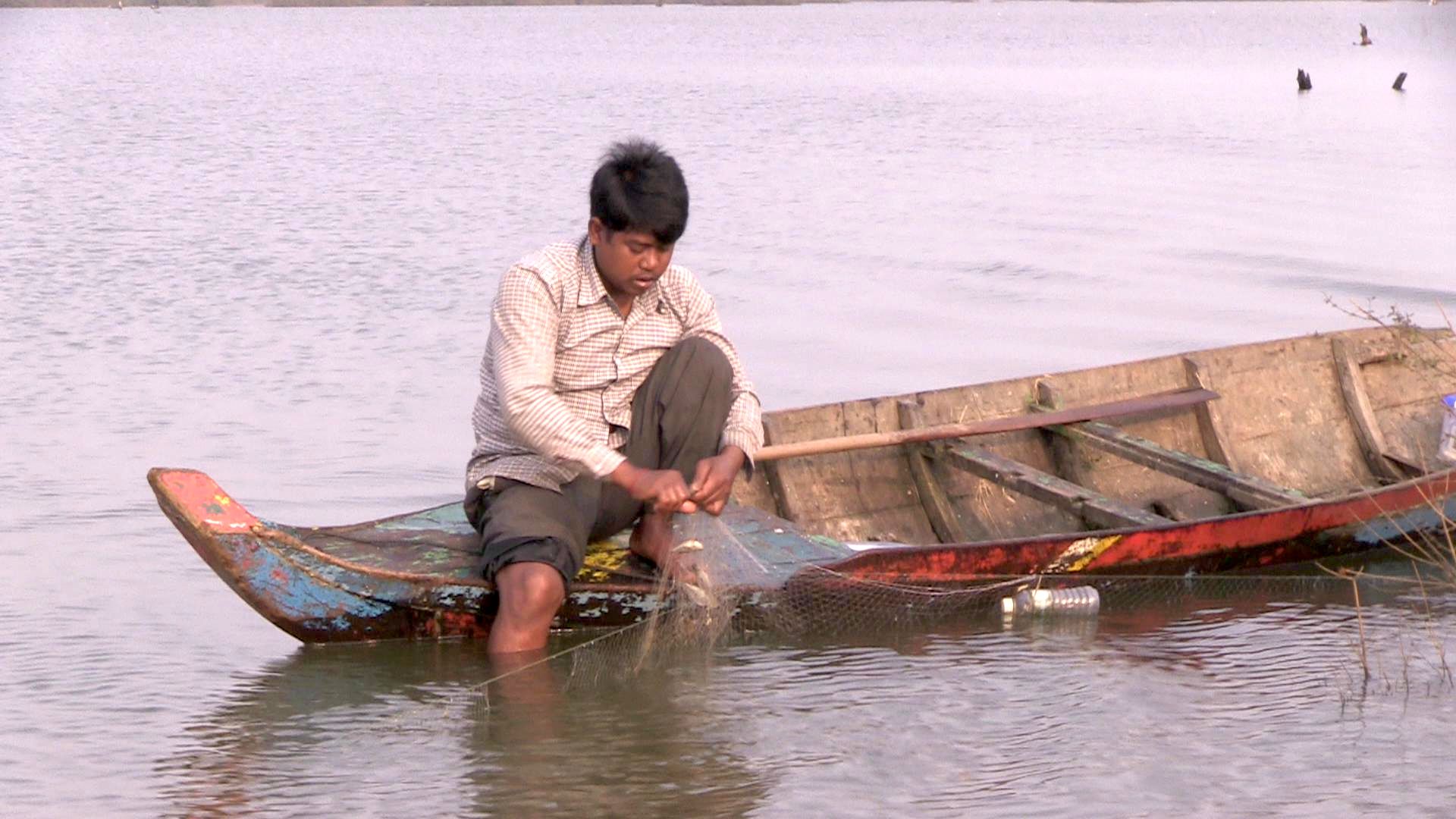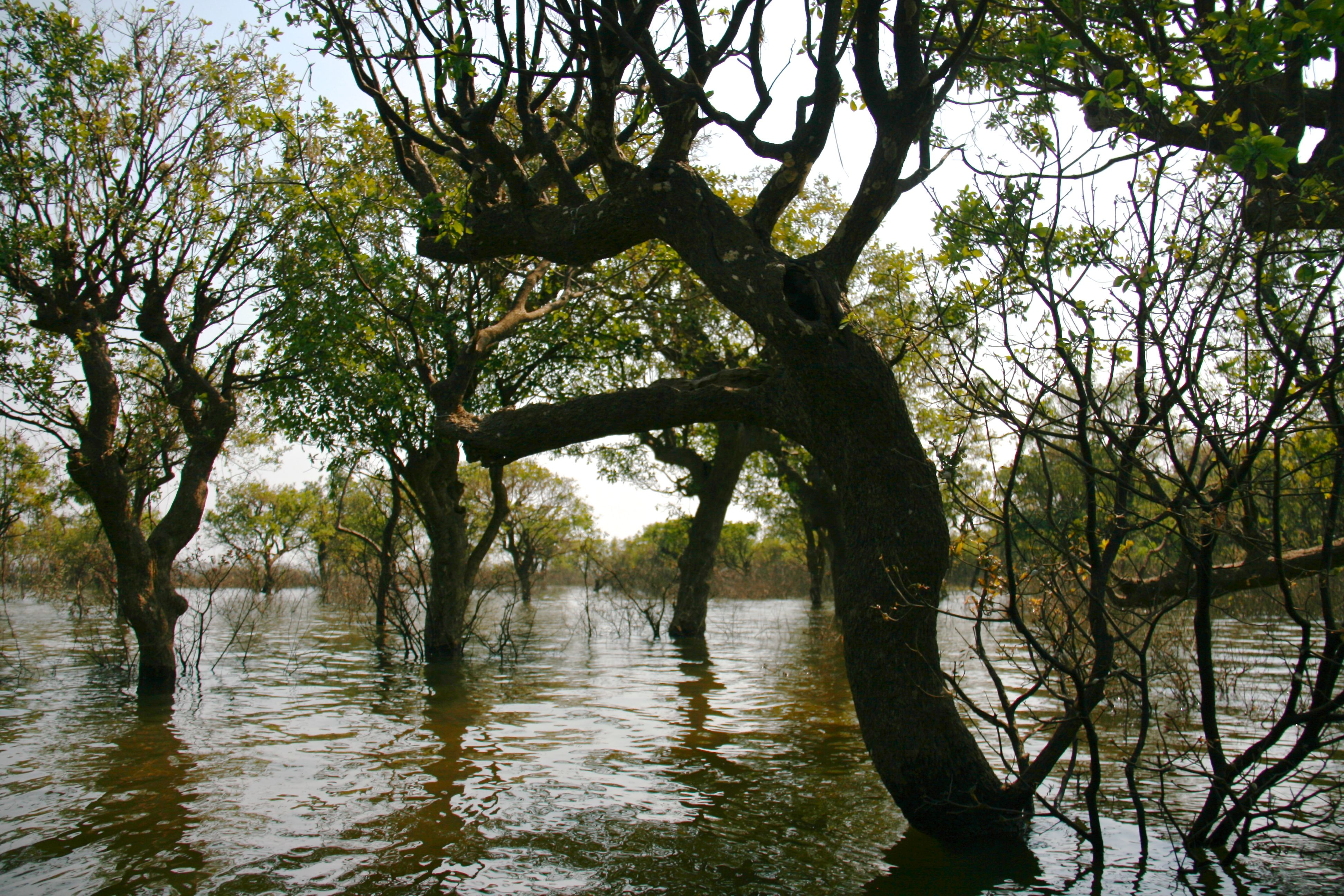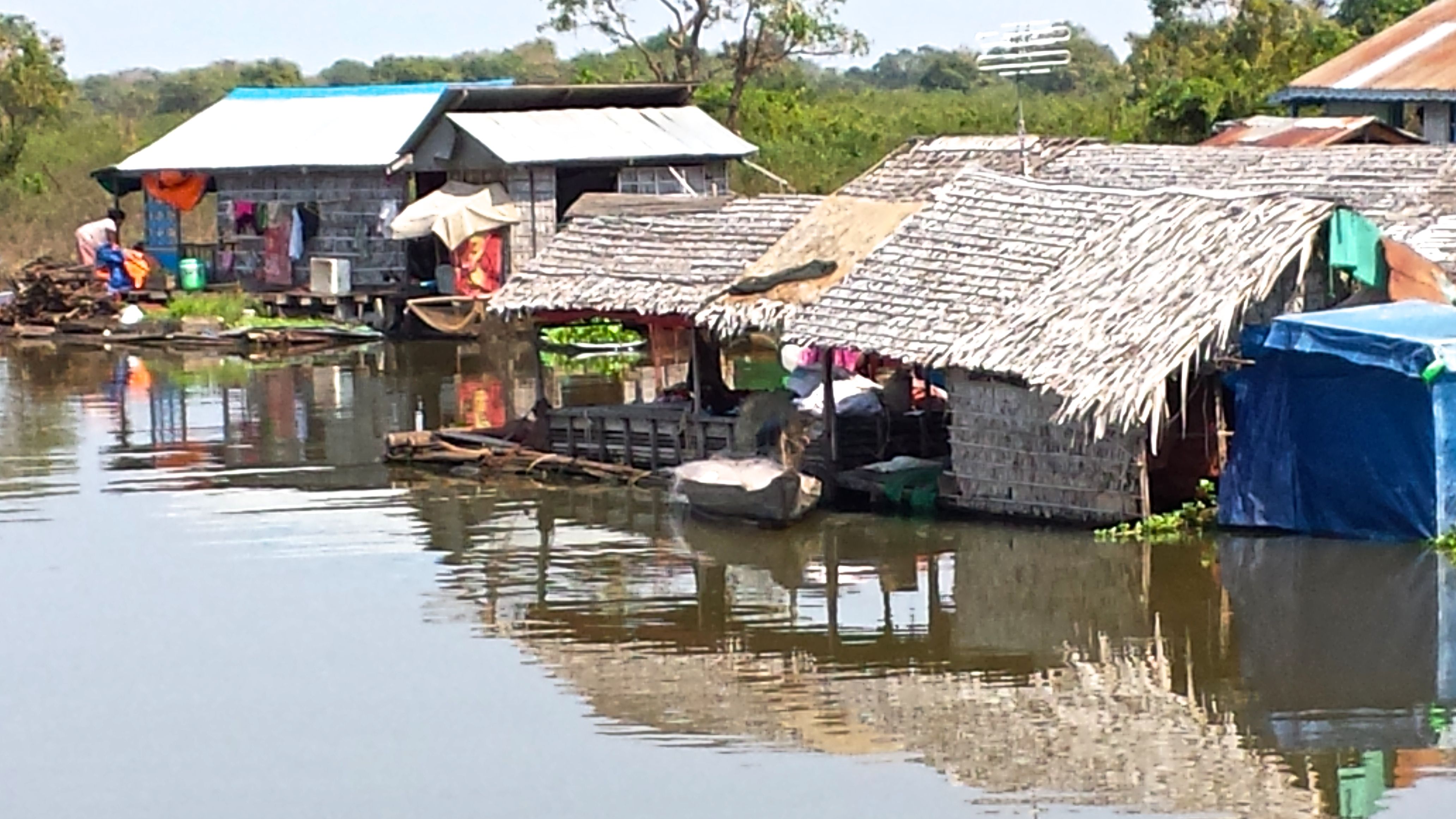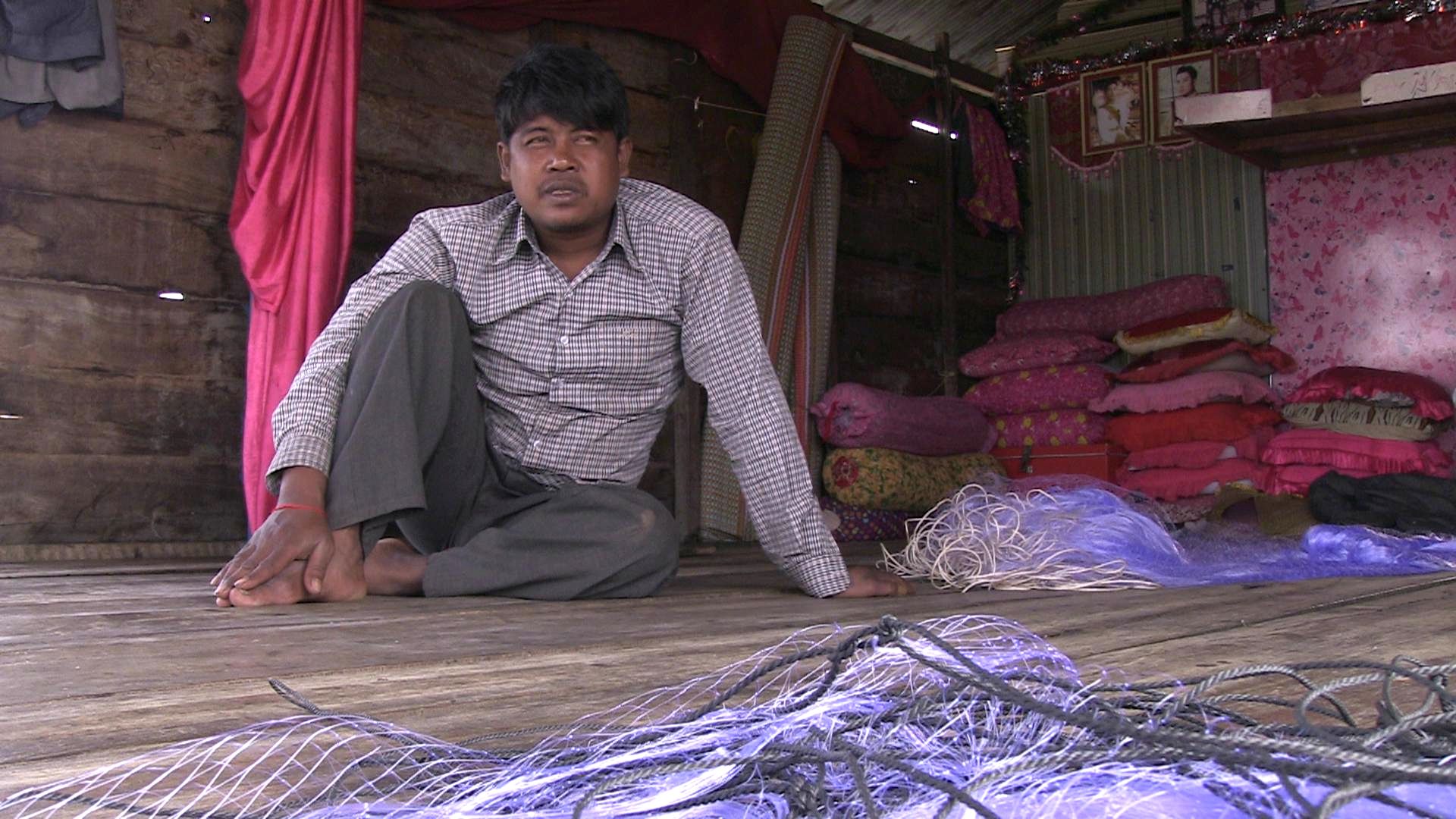I meet Keo Mao, 42, in the floating fishing village of Akol on Cambodia’s Lake Tonle Sap. The houses here move seasonally with the lake, which expands by a factor of five during the monsoon rains and recedes again in the dry months. Fish supply about 80 percent of the animal protein eaten by Cambodians, and about 60 percent of the inland catch comes from the Tonle Sap.
Mao is baby-faced, with a thick mop of dark hair and a ready smile that crowds out his other features when fully displayed. His stubby-fingered hands are heavily calloused from decades of work on the water. He’s not fishing the day we meet, however. Along with a few other local fishermen, Mao earns some part-time cash by helping Conservation International track the health of the lake and its fish. They collect fish from sample nets set around the lake and take notes, recording the species, size and weight, and snipping off a bit of tail to be shipped off to a lab at Texas Tech for DNA analysis. The rest of the time, Mao’s out on the lake — setting his net in the evenings and hauling it back out early the next morning. He doesn’t need science to know the lake is in trouble.
“The lake now is not really so good,” Keo says through an interpreter. “There are too many people.”
That pretty much sums it up. There are still plenty of fish here, but more and more people are going after them. In the last few years, many have migrated to the lake, because huge government land concessions to timber, mining, sugar, rubber and cassava plantations have displaced them from family farms. Others have been forced to sell their land to pay off debt. The vast majority of people in Cambodia earn their living from the land, and good land is increasingly expensive. Fish, however, are free for the taking, especially since the government dissolved the Tonle Sap’s large private fishing lots in 2012.
The lake is now divided into hundreds of community-managed fisheries, mingled with newly designated conservation areas. It was a change long-advocated by many Tonle Sap residents, who were tired of wealthy, politically connected people securing the fishing lots, hiring a few locals for harvest and excluding the rest with fences, guards and AK-47s. But when the lot owners pulled up their fences, the weakness of public governance on the lake was evident. Most local communities don’t yet have the means to properly police their bit of the lake, exclude outsiders, or keep people from using illegal fishing gear or sneaking into sanctuaries.
The lake’s bigger fish are increasingly scarce. What remain abundant are the various, small silver species known collectively as Trey Riel, “Money Fish,” most of which are processed into Prahok, a fermented fish paste found everywhere in Cambodian cooking.
The catch varies a lot by season, but a day of fishing on the Tonle Sap brings in about $60 on average. Accounting for the cost of gear, boat maintenance, and diesel, means many people here are in debt—the average debt is nearly $800, according to Cambodia's Department of Fisheries—with loans provided by the middlemen who buy their fish and lock them into below-market prices in lieu of charging interest.
To support his family, a wife and five kids, Keo also keeps pigs in a floating pen next to his house. Like many others in his village, he has an aquaculture cage where he raises giant snakehead fish (channa micropeltes), which take about six months to grow to market size. He also had a floating vegetable garden, but a storm during the last monsoon season tossed the house so violently that the gardens were destroyed. New arrivals around the lake have also expanded rice planting on the floodplain, clearing the seasonally flooded mangrove forests that are a critical habitat for Tonle Sap fish as well as protection for the villages from storms like the one that ruined his vegetable garden.
Like most people in Cambodia over a certain age, Mao’s life story is divided and torn by war. From 1975 to 1979, when Pol Pot and the Khmer Rouge ruled, much of the country was forcibly relocated to rural areas to work in the rice fields. People were separated from their families, and nearly two million people — about one-fifth of the population — were killed from overwork, starvation and executions. Asked about his history, Keo focuses on the time after Pol Pot was ousted, during which he has always been a fisherman.
He moved to the lake in the mid-1980s. Since then, he has witnessed the destruction of more than half of the flooded forests. Mao believes his five kids will likely also fish this lake for a living, but it’s a hard life and not likely to get easier anytime soon. If he could earn a little more money, he says, he’d keep his kids in school longer to give them more opportunities. If he did very well, he would leave the lake and move his family to dry land.
(Editor's note on March 3, 2014: The average daily earnings for one fisher were updated to reflect current information.)









